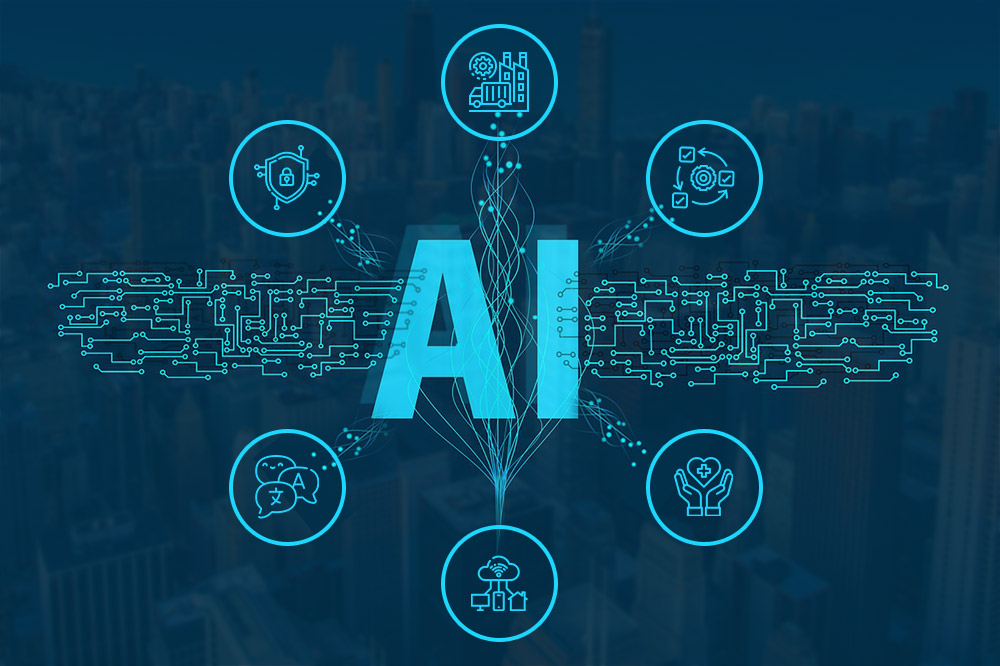
In a world driven by technological advancement, artificial intelligence (AI) has a significant impact on the progress and transformation of industries worldwide. For example, through Xtracta’s AI engine (which has full OCR support), businesses can now achieve fast and accurate data capture for use cases like invoice scanning, contract extraction, and more. This simplifies the way they deal with data and minimise the need for time-consuming manual data processing.
The possibilities of AI are endless, and today, we will discuss current artificial intelligence trends, exploring everything from the potential of AI in supply chain automation to cybersecurity, and more. Below are a few major AI trends to look out for in 2022 and beyond.
Augmented Business Processes and Systems
2020 and 2021 brought to light the potential advantages technology can bring to businesses during a crisis. Within the business landscape in 2022, AI advancements and associated technologies have the potential to improve business resilience further still. For example, through augmented data management and augmented analytics, businesses can enhance their processes and systems, achieving operational excellence while boosting resilience and cost efficiencies.
AI in Supply Chain Automation
Supply chains are essential for most, if not all, businesses today, and ensuring all supply chain components are running smoothly enables businesses to provide reliable on-time deliveries. Artificial intelligence plays an essential role in optimising supply chain efficiency. The technology automates operations by using algorithms based on previously processed data.
Essentially, automation improves supply chain operation and reduces the number of errors caused by manual data entry. AI can also pick up on patterns in the supply chain which can be used to manage inventory and predict future patterns in purchasing demand.
Use of AI in Cybersecurity
AI algorithms are prevalent in a range of applications, including ones for detecting malicious software, monitoring corporate networks, and preventing cyber-attacks. However, one of the main concerns for business owners today is the threat smart hackers pose—those who can manipulate data used in model training, gain access to sensitive information, or detect security faults in corporate systems.
Nowadays, businesses are looking for AI solutions that protect against these security risks, both enabling business data to be closely monitored and for specific security elements to be included in AI models.
AI and Climate Change
In 2022, AI is being utilised to offer climate change and environmental protection solutions, in areas such as carbon emission reduction, fossil fuel monitoring, and deforestation tracking. How these AI solutions are applied to corporations is evident in examples such as a case study by Google, where deep learning was applied to data centre cooling technology, resulting in a 40% reduction in energy use.
Hyperautomation in Healthcare
AI advancements are also evident within the healthcare industry, where AI technology can be used in delivery systems, enabling fast and highly accurate decision-making. For example, AI technology can streamline healthcare system workflows, reduce costs through automating repetitive manual tasks, and help boost the delivery of quality products to the market.
AI and Internet of Things (IoT)
Artificial intelligence and machine learning are boosting advancements with IoT devices and services, making them smarter and more secure. Deep learning algorithms are being applied to the data produced by connected devices, enabling better forecasting and trend discovery. In turn, this means highly accurate insights can be gleaned from IoT device data. Examples of use cases for this include areas such as monitoring the health of machines in factories. Data from IoT sensors used with the machines coupled with advanced machine learning can uncover potential future failures allowing preventative maintenance to be done and reducing the likelihood of unplanned downtime for the factory.
Large Language Models (LLM) and Conversational AI
Today large language models are being pushed to the boundaries with billions of parameters, creating comprehensive AI-based language models to pave the way for the next generation of conversational AI tools.
Based on natural language processing techniques and algorithms, language models deduce the probability of a given sequence of words in a sentence. The advancement of large language models (LLM) means that LLM can do a wide range of tasks, from summarising textual information and determining the next words in a sentence to constructing visual charts based on plain text.
Large language models are trained on datasets containing enormous amounts of data. Due to this, the possibilities of what this technology can achieve are becoming more and more profound. In 2022, LLM can be used to generate anything from simple essays to complex financial models.
Get in touch with the team at Xtracta to discuss the advantages of OCR data capture for your company
Artificial intelligence is constantly developing and transforming industries today. Through Xtracta’s specialised approach to machine learning and intelligent document processing, companies can maximise their workflow efficiency and accuracy with ease. Powered by AI and optical character recognition software, the Xtracta engine provides incredible document classification accuracy and general models can be trained efficiently, delivering results in record time.
If you’re interested in the benefits of our invoice, receipt, and contract data capture technology for your business, get in touch with the team today.










